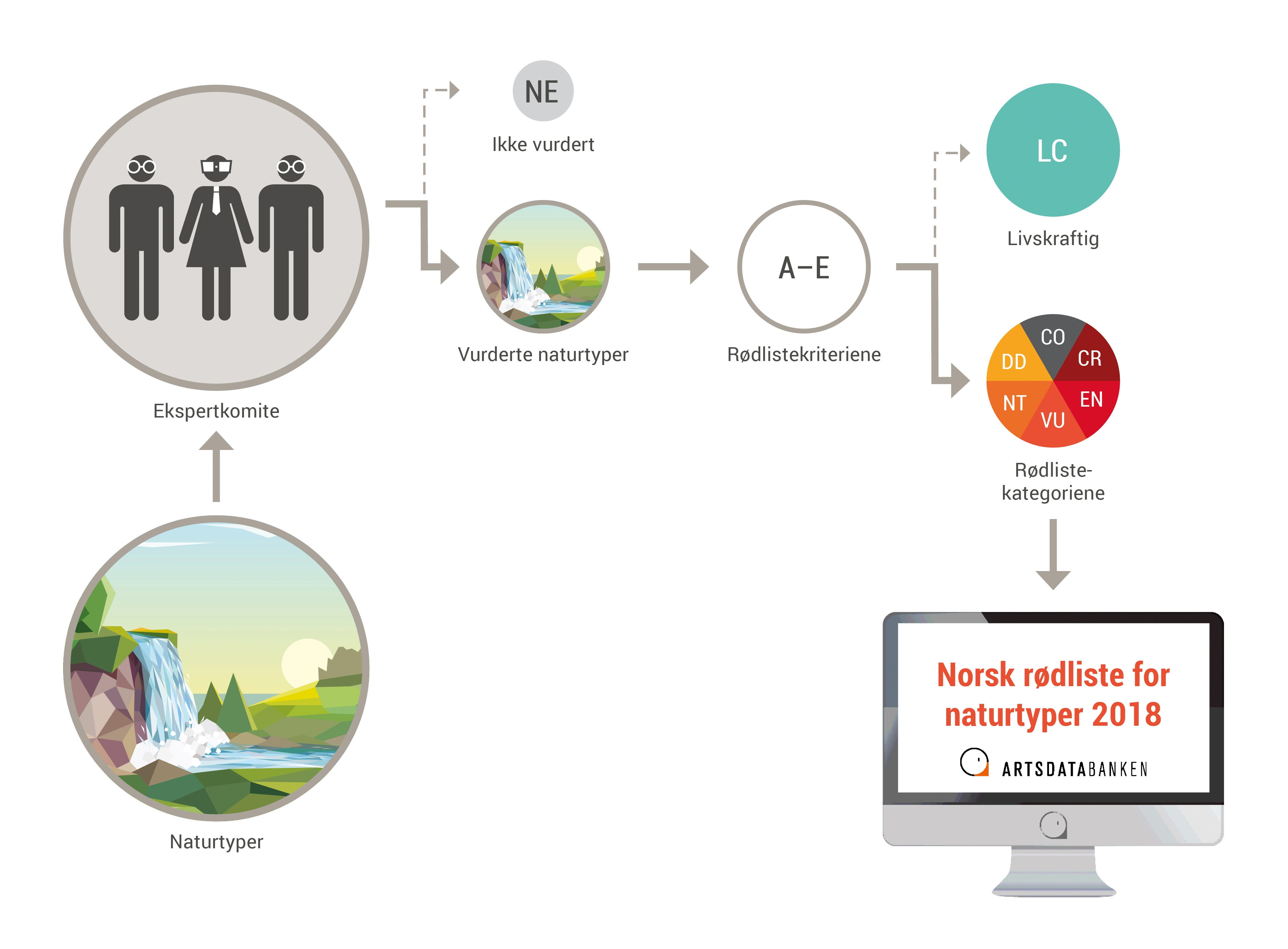What is the Red List of Ecosystem Types?
The Norwegian Red List of Ecosystem Types 2018 provides an overview of all red-listed ecosystem types, the assessment category to which they have been assigned and the reasons for red-listing.
- Innhold
- Category is determined by the risk of collapse
- Purpose of Red Lists
- Developing a Red List of Ecosystem Types
The Red List of Ecosystem Types is a value-neutral compilation of knowledge. It presents the risk of ecosystem collapse, in Norway, if the prevailing conditions persist. This is the second official Red List of Ecosystem Types; the first was published in 2011.
Category is determined by the risk of collapse
On the basis of their assessment, ecosystem types are assigned to the appropriate category. The six Red List categories are: Collapsed CO, Critically Endangered CR, Endangered EN, Vulnerable VU, Near Threatened NT and Data Deficient DD. Ecosystem types which are assessed as being of Least Concern LC, or where the available knowledge is too poor to make an assessment (Not Evaluated NE), are not on the Red List.
The ecosystem types on the Red List are characterised by a reduction in geographic distribution (loss of area), or environmental degradation. It is usually a combination of several impact factors that result in an ecosystem type being placed on the Red List.
The Red List 2018 comprises an assessment of 286 ecosystem types, and the assessment area is the Norwegian mainland and adjacent marine areas, as well as Svalbard.
The categories Collapsed CO, Critically Endangered CR, Endangered EN, Vulnerable VU, Near Threatened NT and Data Deficient DD comprise the Red List categories. Ecosystem types are of Least Concern LC when declines in the geographic distribution, or the degree of environmental degradation, do not meet the threshold values for red-listing.
Purpose of Red Lists
A Red List is developed primarily to contribute to knowledge-based environmental management and to disseminate information about threatened ecosystems to the general public, and other relevant target groups. A Red List is also an important tool for identifying knowledge gaps.
Developing a Red List of Ecosystem Types
For the Norwegian Biodiversity Information Centre it is important that Red List assessments are based on the best possible data and knowledge, and that provisional results are open for public viewing and comment. The aim is first and foremost that those possessing supplementary information about ecosystem types are able to make suggestions and thereby play a role in increasing the available knowledge. An open process also contributes to increased confidence in the reliability of the results. All contributions are considered by the chair of the relevant expert committee, in dialogue with the Norwegian Biodiversity Information Centre. An opinion is formed thereafter as to whether there is a basis for revising the provisional assessment.
All assessments made by the experts, during the Red List process, are registered in the Red List database for Ecosystem Types. All relevant resources used in the assessment process are also registered here. This type of database contributes to process standardization, correct and consistent use of criteria, and verifiable assessments. All assessments must be justified, and the data and knowledge on which an assessment is based must be documented. Information on the geographic distribution (area), occurrences at the county level, and important impact factors are also registered in the Red List database.
The Norwegian Biodiversity Information Centre arranged two seminars for the experts to ensure the greatest possible standardisation and coordination in the application of the criteria.
The process is undertaken by several expert committees and all ecosystems in Norway, apart from strongly modified environments, are assessed. The ecosystem types are assessed against five criteria (A – E). The result of the assessment determines the Red List category: Collapsed CO, Critically Endangered CR, Endangered EN, Vulnerable VU, Near Threatened NT and Data Deficient DD. The Red List of Ecosystem Types is made publicly available and can be accessed to identify the risk category of an ecosystem type.

